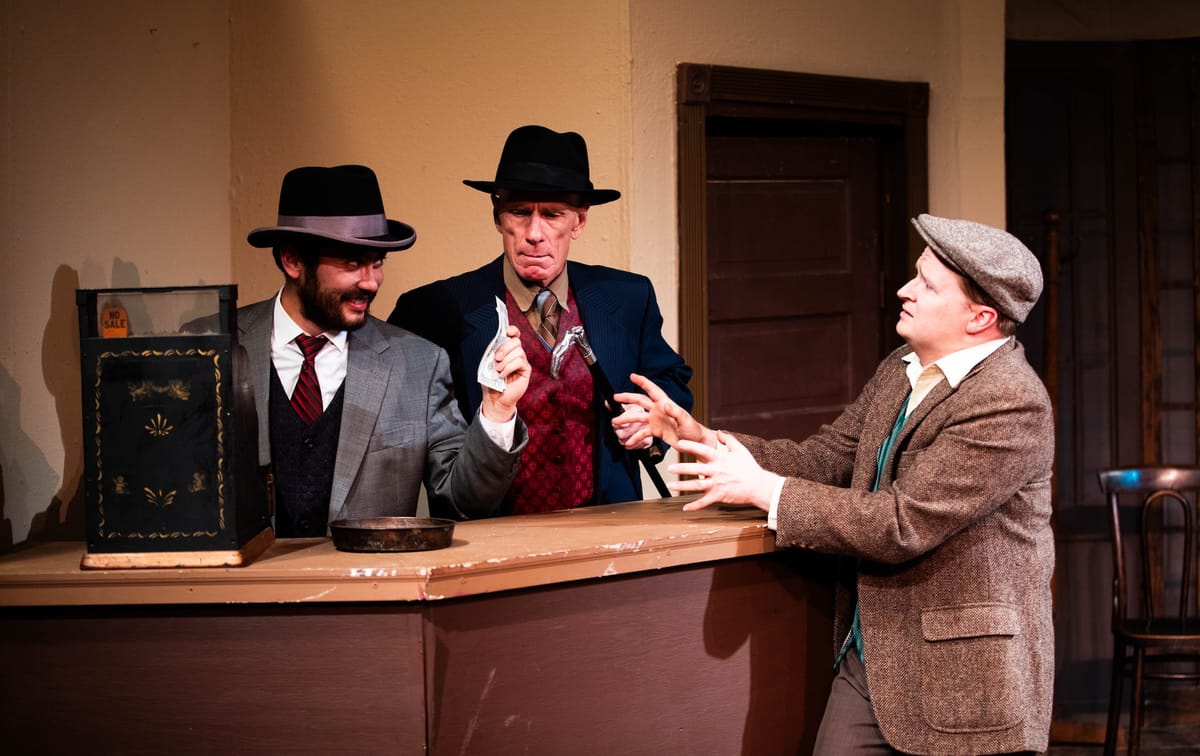The Wichita Wind Symphony brings innovation and energy to Wichita's classical music scene
The new-music ensemble’s third season of free concerts begins this Saturday.
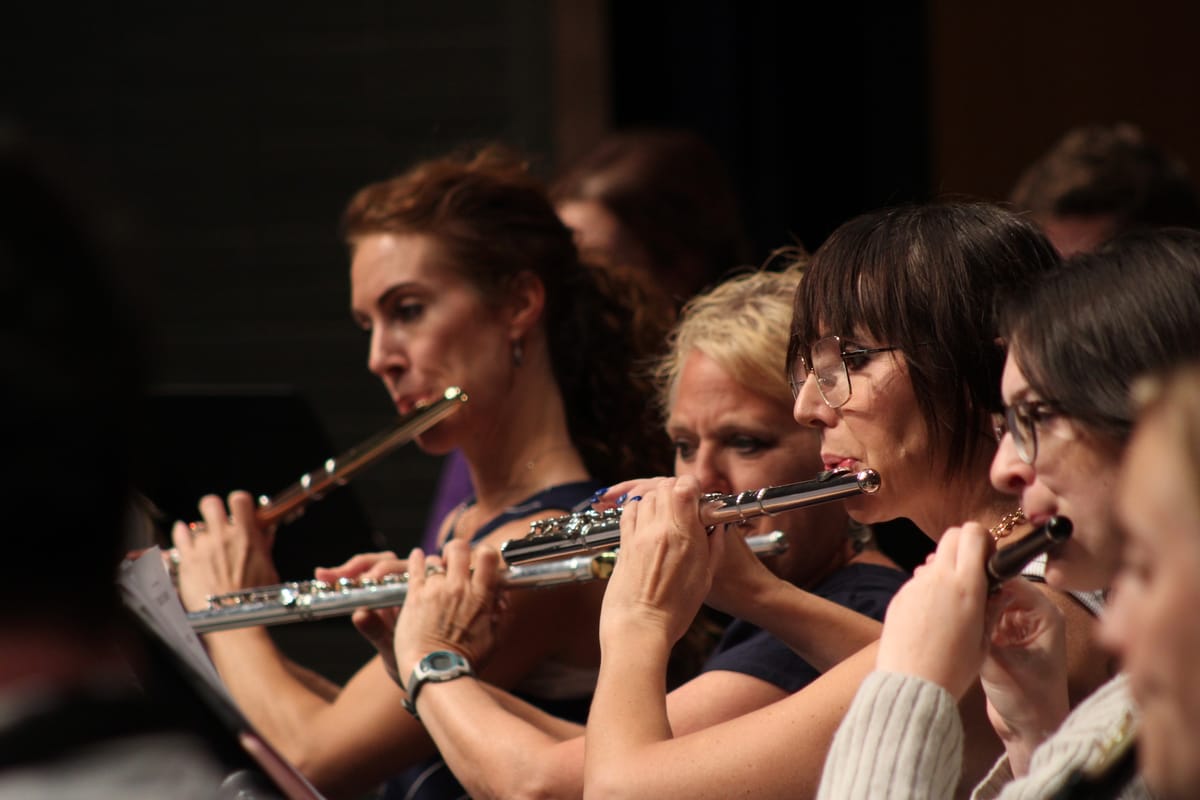
Did you know that Wichita has its own semi-professional wind band? The Wichita Wind Symphony brings together professional and amateur musicians to perform some of the most exciting and innovative music being composed today.
You might think you know what a band sounds like, but this group will stretch your ears and broaden your mind. Once you’ve attended one of its free concerts, you’ll likely think differently about wind instruments.
Beginnings
Founded by Wichita State University professor Timothy Shade two summers ago, the Wichita Wind Symphony has a simple mission: “To provide innovative programs of wind band music that foster artistic, educational, and cultural enrichment for the community of Wichita and beyond.” The symphony debuted in 2023 with a Memorial Day concert at the then newly renovated amphitheater at Wichita State's Duerksen Fine Arts Center. Its 2025–26 season of eight performances begins this Saturday, June 14.
Shade fell in love with contemporary wind music in graduate school at the University of Miami while playing in the wind ensemble under the direction of the legendary conductor and new-music champion Gary Green. Since then, it’s been Shade’s passion, and he nurtured the dream of bringing to the Wichita area a professional band that would play this kind of music.
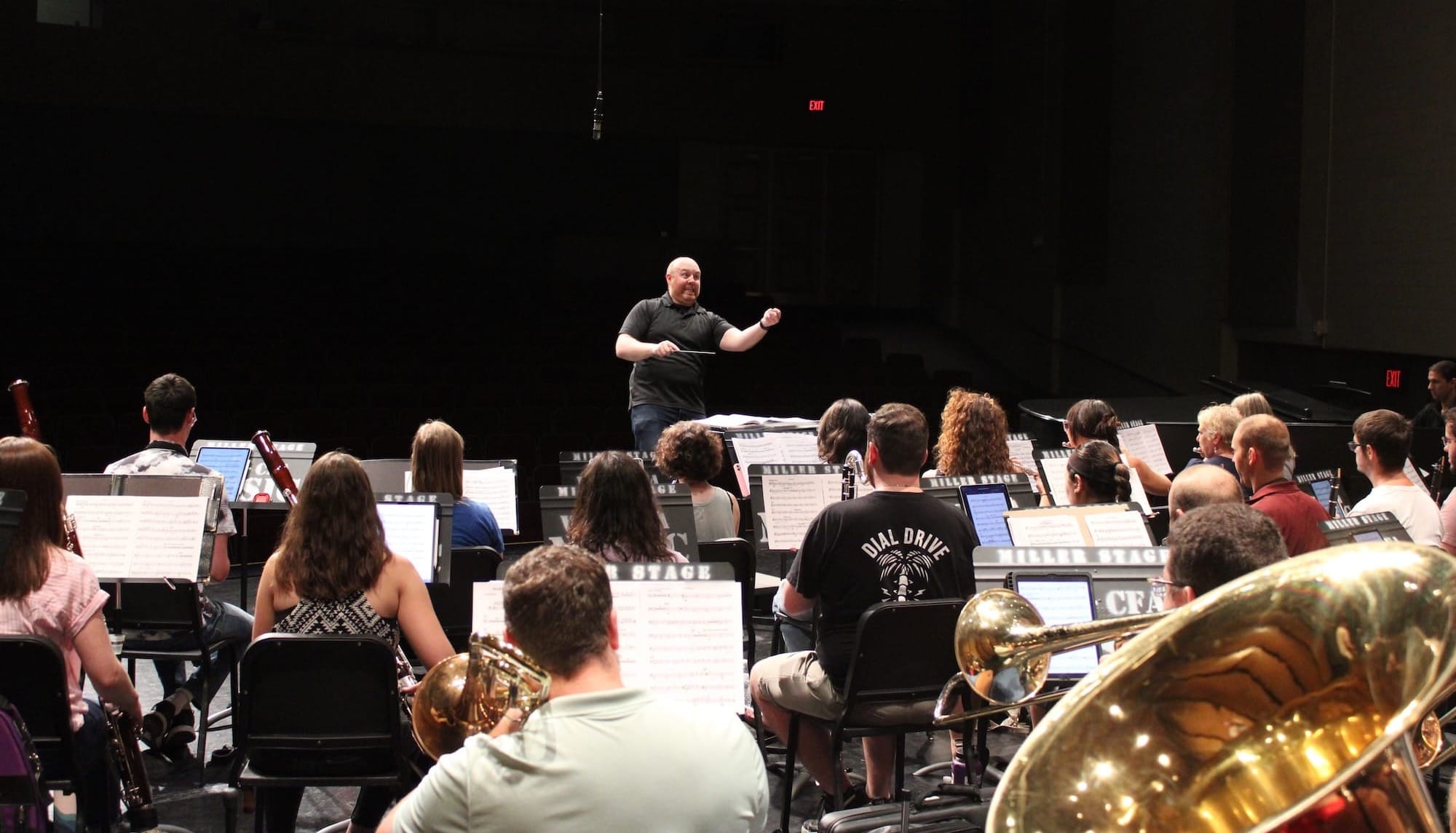
Funding, however, presented a barrier. But by his ninth year in Wichita, Shade didn’t want to wait any longer. He surveyed local musicians, sharing his dream of a band that would focus on playing music by living composers, and the response was terrific. Musicians ranging from professional members of the Wichita Symphony Orchestra to music educators to amateurs believed in Shade’s vision,wanted to bring it to fruition, and were willing to donate their time and talent to do so. After incorporating as a nonprofit, the Wichita Wind Symphony was born.
What’s in a name?
What do you think of when you hear the word "band?" While that word refers to almost any large ensemble consisting mostly of wind and percussion instruments (marching bands, brass bands, concert bands, etc.), other terms like “wind symphony” also float around with different meanings depending on the context. Wind ensembles and wind symphonies are essentially smaller versions of concert bands. With more flexible instrumentation and fewer players per part, they can play music that is more artistically complex.
The Wichita Wind Symphony includes the standard woodwind, brass, and percussion instruments we expect to see in a band, but in different combinations — fewer clarinets and more percussionists, for example. It’s also normal to see a string bass, piano, and even a harp included on some pieces. A composer can write a piece that uses any combination of instruments from the group. This flexibility means you’ll hear all different kinds of sounds and combinations of timbres on the stage during one concert.
Subscribe to our free email newsletters
Stay in the know about Wichita's arts and culture scene with our Sunday news digest and Thursday events rundown.
No spam. Unsubscribe anytime.
In addition to instrumental versatility, band concerts typically play music composed by Americans and composers who are still alive — both elements of wind ensembles that I enjoy. While I love symphonies by Beethoven, Brahms, and the other dead Europeans who make up the bulk of orchestral repertoire, I am always excited to hear music composed more recently. I love the way newer music captures our own time in a musical language that is closer to that of our daily life.
The Wichita Wind Symphony’s final performance of the 2024–2025 season, “Swingin’, Singin’, and Stompin’,” lived up to its name. The audience had a great time. Small children danced in the aisles, and the ensemble received a standing ovation partly due to the sheer power of the finale, Omar Thomas’s “The Low-Down Brown Get-Down.” Thomas’s music brings the sounds of African American folk, pop, and gospel music into the concert hall. In this case, his tribute to the “blaxploitation” films of the 1970s provided a hefty and nourishing serving of funk, soul, and early hip-hop. It’s no wonder that the audience leapt to their feet at the end.
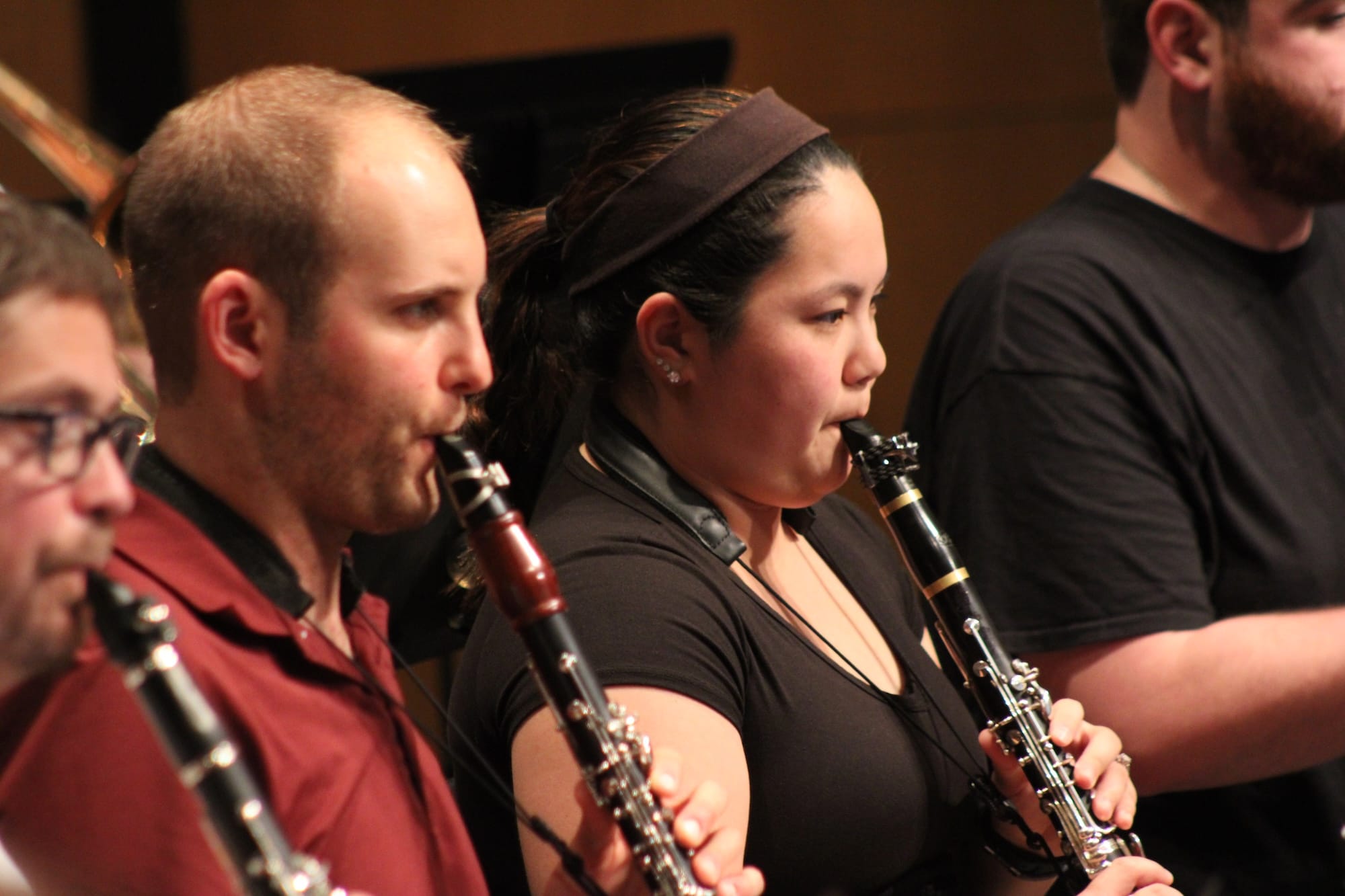
Historically contemporary
Bands are historically great at this type of programming. In the early decades of our country’s music history, bands were the vehicle for people of all ages to hear popular and new music alongside traditional standards. In the latter half of the 19th century and beginning of the 20th century, two American bandmasters made this kind of programming the norm: Patrick Gilmore, the composer of “When Johnny Comes Marching Home,” and John Philip Sousa, known as the “March King” for his many compositions including “The Stars and Stripes Forever.”
Gilmore and Sousa were bandmasters during times when orchestras were becoming increasingly popular — and exclusive — in the United States. Both men made it a point for their band concerts to emphasize entertainment rather than edification. So in addition to transcriptions of orchestral pieces from Europe, audiences would hear dances, popular songs, and marches. This “potpourri” programming kept concerts fun and offered a drastically different vibe from the era’s stuffier orchestra concerts.
Shade, like Gilmore and Sousa before him, loves this versatility of programming. When selecting music for a Wichita Wind Symphony concert, he always makes sure to include something recognizable for an audience, but he highlights what’s new as well.
“It brings a different kind of energy, but it’s a very familiar energy," Shade said. I want people to feel like it’s an ensemble that’s theirs, that they can come and have a good time and let their hair down.”
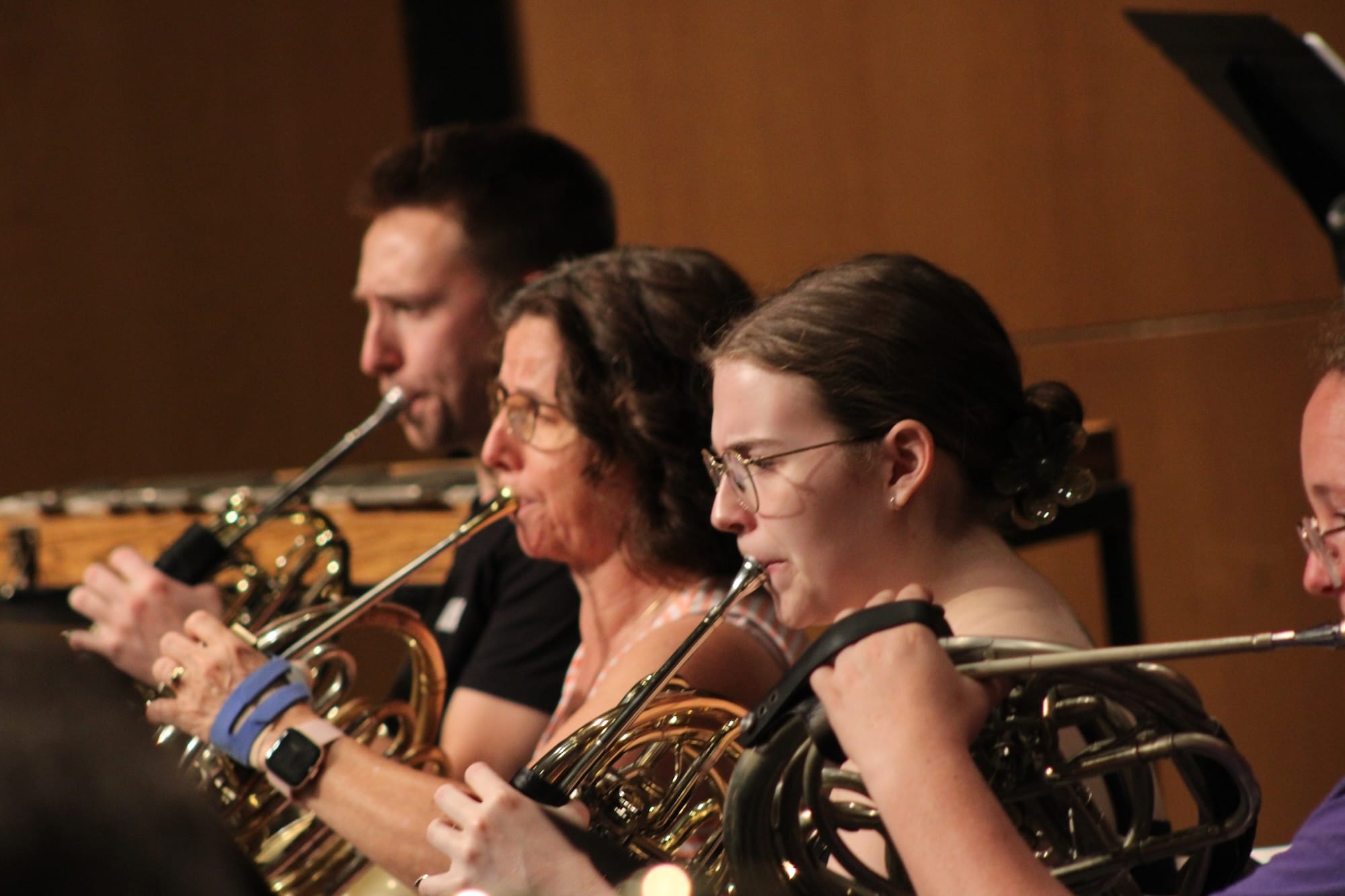
At “Swingin’, Singin’, and Stompin,’” I was most excited to hear Omar Thomas’ work, but there was also an older standard by Frank Ticheli that many in the audience likely recognized, as well as arrangements of songs from the opera “Porgy and Bess.”
As the Wichita Wind Symphony gears up for its 2025–2026 season, Shade is most excited to continue introducing the audience to some of his favorite contemporary composers, including Harrison Collins, Kevin Day, John Mackey, and David Maslanka, whose works will all make appearances throughout the season. Although you may not recognize their names, I feel comfortable promising that you’ll enjoy their music. I’m most excited to hear the work by Maslanka that Shade has penciled in — we both think that he was one of the greatest band composers to ever live. Shade has some familiar tunes up his sleeve, too: The band’s opening concert on June 14 will be a Bernstein and Gershwin extravaganza, and a later concert in the season will be dedicated to movie music.
The Details
Wichita Wind Symphony 2025–26 Season
Saturday show times are at 7:30 p.m. at the Miller Auditorium in the Duerksen Fine Arts Center on Wichita State's campus. Performances are free.
Summer Season:
June 14, 2025: An Evening of Bernstein & Gershwin
July 19, 2025: Dance with the Music
Aug 9, 2025: A Night at the Movies
Classics Season:
Oct 18, 2025
Nov 8, 2025
Dec 12, 2025
Jan 10, 2026
March 28, 2026
Kate Storhoff is a musicologist whose research focuses on contemporary wind band music. Before moving to Wichita, she managed an independent bookstore and taught at Wake Forest University and the University of North Carolina School of the Arts. She plays the clarinet, piano, and Northumbrian smallpipes.
Support Kansas arts writing!
The SHOUT is a Wichita-based independent newsroom focused on artists living and working in Kansas. We're partly supported by the generosity of our readers, and every dollar we receive goes directly into the pocket of a contributing writer, editor, or photographer. Click here to support our work with a tax-deductible donation.
❋ Derby man has the kind of voice that turns heads — and chairs
❋ Socializing while sober: how some Wichitans are cultivating alcohol-free communities
❋ As a small creative business closes, the owner mourns
❋ Painting through it: Autumn Noire on 20 years of making art
❋ How a guy from Wichita resurrected 'Dawn of the Dead'
❋ Bygone Friends University museum housed curious collections
The latest from the SHOUT
 The SHOUTKevin Kinder
The SHOUTKevin Kinder
 The SHOUTSam Jack
The SHOUTSam Jack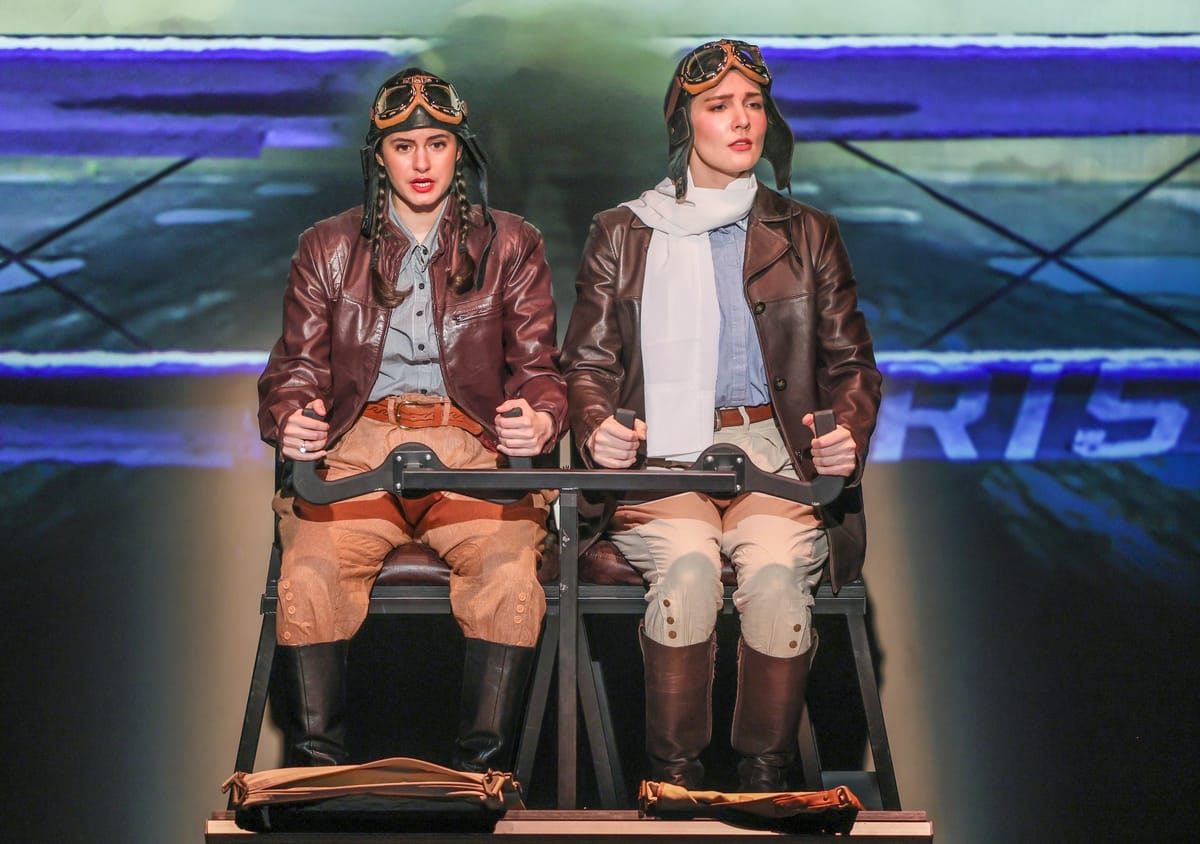
 The SHOUTStefania Lugli
The SHOUTStefania Lugli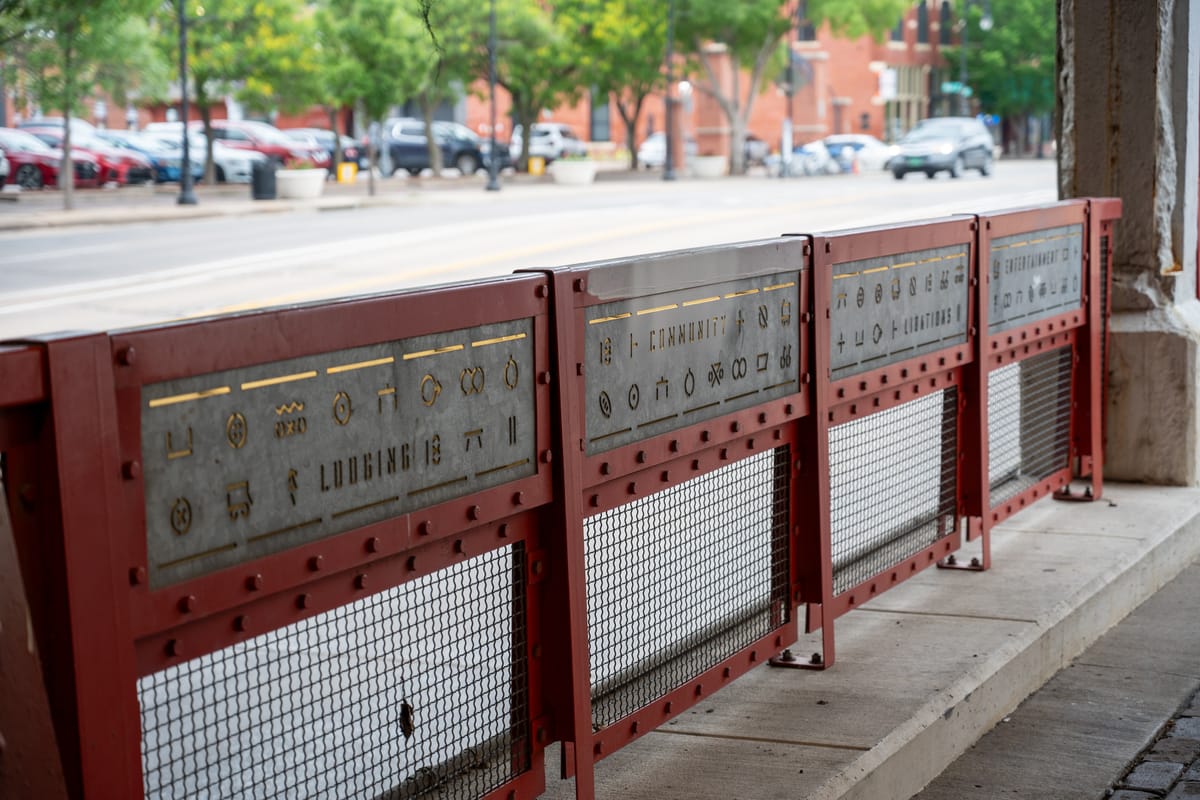
 The SHOUTAnne Welsbacher
The SHOUTAnne Welsbacher